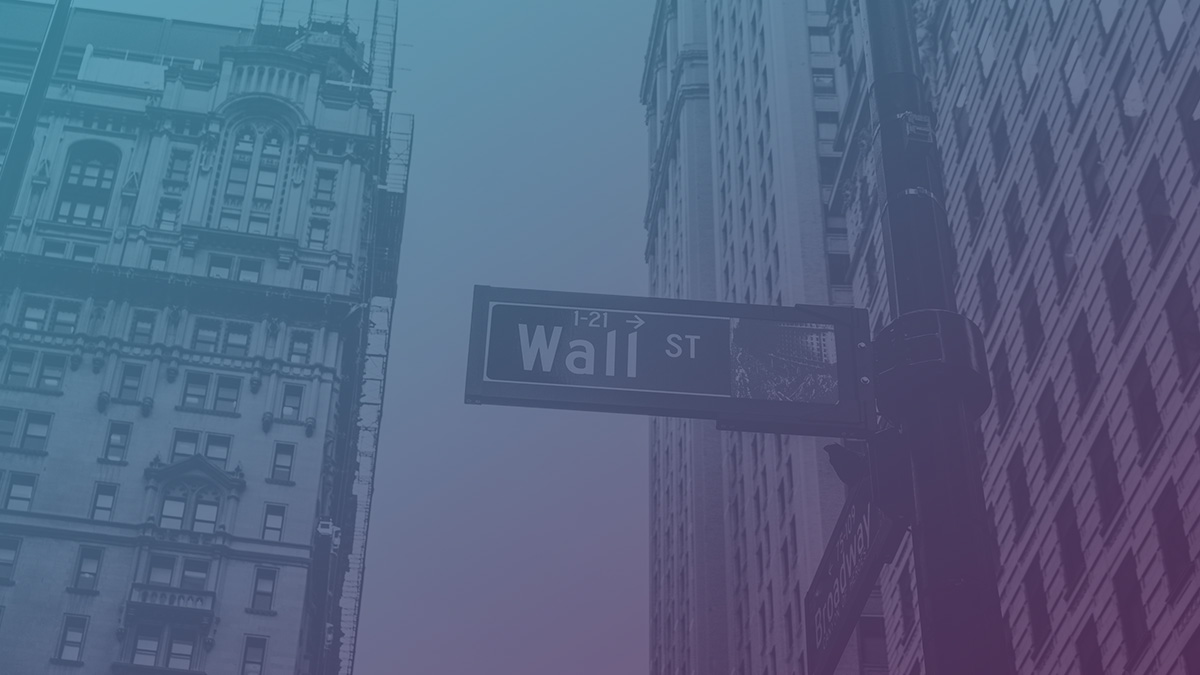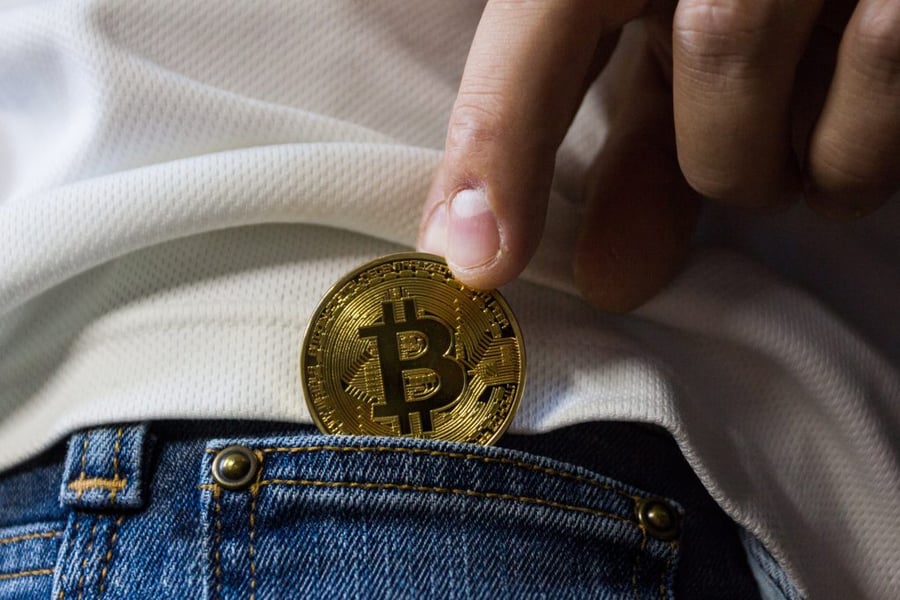
Why Bitcoin is More than Just the Buzzword of the Year
The conversation surrounding the blockchain and Bitcoin has exploded in recent months.
Thanks to Bitcoin’s record-breaking rise in 2017, more people than ever are intrigued by the world of cryptocurrencies. But the technology that’s set to revolutionize the business and financial industries still lurks just outside of the mainstream, seen largely as intangible and confusing — just another digital fad that’s sure to fade.
Jamie Smith, the Chief Communications Officer at Bitfury, one of the leading blockchain infrastructure providers, says that if businesses aren’t currently figuring out how they can get on board with Bitcoin, they’re already getting left behind.
Right now is the moment to harness this technology for your bottom line. There’s no reason to be afraid of it.
Smith’s career in crypto seems unlikely given her pedigree: most recently she served as Executive Vice President at Edelman Public Relations, and before that she served as Special Assistant and Spokesperson for President Obama and Deputy White House Press Secretary. She says that after doing months of her own research on the services, she knew this was the industry she wanted to be a part of, and feels that others’ “a-ha” moments aren’t far behind.
In many ways, Smith represents the rare relatable voice in a conversation that’s often led by the tech and engineering worlds. While she jokes that it was an “insane decision” to make the leap to Bitfury, the opportunities she saw in matters of security, identity and equality in Bitcoin’s future were too inspiring to pass up.
“Most people in this world just want to provide for their families and keep them safe, and create a nest egg for the people they love,” she says. “And if you have a technology that allows for those three things to happen, chances are it’s going to be pretty successful.”
We chatted with Smith about her leap of digital faith, the limitless crypto future and why and how marketers need to embrace this change.

Pressboard: You’ve had a remarkable career trajectory. Most recently you were in a senior leadership position at Edelman, and before that you were the Deputy White House Press Security and Special Assistant to President Obama. You’re unique in that you left those worlds behind to join a major player in the Bitcoin industry. Could you walk us through that decision?
Jamie Smith: I was very happy living my post-government, White House job life. I was sitting at home with my beautiful 10-day-old baby boy, my second child, and this guy that I worked with at the White House called me and he said, “Hey, I think you should totally leave your super safe job with two small children and join this crazy start-up with a bunch of people you’ve never met.” And I was like, “Are you out of your mind? That is criminal money, and I want nothing to do with it, and you’re crazy.” And he said, “Well, that’s the problem, is that that’s what people think, and we really need to change that narrative.”
Not to say that when you are with a new baby that you have time on your hands, but you do have time to read. And I was so compelled by what I was reading. It wasn’t that I wasn’t aware of Bitcoin coming on the rise, I just didn’t understand the potential of it, and what it actually meant, and I certainly did not understand blockchain technology at all. About three months after I started [researching], I was convinced that this is what I was going to do.
What I’ve found is that people go through one of three doors as they are navigating this. One, they either really, really care about the security and the data integrity, which was me. Two, they really care about the finance part, like straight-up money movement, which is frankly not me. I care about it more from a different opportunity standpoint, and ensuring people can access more capital, and frankly just start a business and provide for their families. But what really put me over the edge, and I think this is sort of the third door, is the [opportunity] beyond finances. What can this technology do to take people to a whole other level of imagination? Whether it’s electronic health records, or identity, or music, or movies or really anything. So that was really cool and exciting to explore, and to really try and wrap my head around.
It’s been off to the races ever since. It’s a wild, exciting, crazy ride. The hardest part of this whole industry is keeping up with it. It changes so quickly that it’s actually sort of mind numbing just how fast this happens, and how magnetic it all is and how many people are getting involved so, so, so fast.
One thing that marketers in the financial services industry face is the difficult task of communicating really complicated products to customers. How do you personally explain Bitcoin to people you know in your life?
I start in a security place. When people created the internet, it was to move information, and it changed the world. But that information had to be stored somewhere. And so what they did is they rightly stored it in silos and put it in databases. But those databases have proven to be relatively hackable.
So a bunch of geniuses came up with the concept of taking all the data in a silo and breaking it up into millions and billions of pieces and putting them around the world so that if you wanted to break into it, you have to actually break into all of those pieces as opposed to just one.
And so you sort of start there and people are like, “Okay that makes sense, that makes sense. So how does it work, and what is blockchain, and what is Bitcoin, or what’s a cryptocurrency?”
And the way that I describe that is that there are two people wanting to exchange value, right? You call me and say I need a thousand dollars, and I say okay, I’ll send it to you. So you have a wallet on your phone, and I have a wallet on my phone. And I send you a thousand dollars, and I sent it along these rails. Think of it like a train track. I’ve attached that asset to a digital token, and that token just went across the blockchain. So think of the blockchain as the train track, the car on top of the blockchain is a digital token, and that digital token is called a bitcoin. So really a bitcoin is just a vehicle to allow you and I to send each other value in the most secure way possible on Earth right now.
What people are doing in the FinTech space is moving money. But what so many industries are discovering is it’s just an asset. It doesn’t have to be money. It can be anything. It could be your vote, it could be a piece of music, it could be a piece of artwork, it could be a diamond. Walmart is using it to track wheat that comes in and out of the country with the country of origin act. The possibilities are literally limitless once you really let yourself think about, “Okay, this is how this works.”
Like, if I had a baby, I want to stamp the fact that that baby exists and put a permanent record into this blockchain system that that baby is a really person. And so I’ve established their identity and I timestamp it onto the Bitcoin blockchain, and now they have a number that says, “This is me. And I grew up, and you can’t erase it. Can’t go in there, can’t change it.”

You mentioned that you needed to help change the narrative around the technology from criminal to world-changing. Where do you think the public currently is on that spectrum?
My focus is much more on the B2B, as opposed to the B2C. I don’t think we’re totally B2C yet as an industry. Most people have never even heard of it. Which is good. There’s a huge opportunity there from a marketing and communications standpoint.
From the World Economic Forum standpoint — I co-chair their blockchain council with former President Ilves of Estonia — last year there were probably 20 different discussions going on about blockchain and cryptocurrencies. So that’s a lot in the early, early years.
And frankly, I’ll tell you why I think that’s the case. I would argue that somewhere in the range of 60-70% of the world’s population is just frankly living under really broken systems. And everybody from your policy maker, to a business leader, to whatever is just looking for solutions. Something new. A new tool in our toolbox that could be utilized to fix some things that just aren’t delivering for people. And like it or not, blockchain and cryptocurrency are it, and they’re here to stay. You either can ignore that, or you have to find some way to embrace it and figure out how you can use it to advance the world to the next level. So I think that’s why there’s such an outpouring about this.
One of the reasons I’m so excited about blockchain technology is the future potential to unlock not just capital, but unlock power in the rest of the world, especially in underdeveloped nations.
I think it is important for your audience to understand there are two tracks working at the same time. There is the developed-world conversation, and the developing-world conversation. And those are actually pretty different. And unfortunately, I think it’s a sign that we’re not so advanced because the two have not completely met yet. But they will really soon. Most people that I talk to who are sort of part of the original internet feel like it’s like 1993, but it’s moving so much faster than in the ‘90s. Because as hard as it is to explain blockchain technology, it’s not anywhere near as hard as it was to explain the internet.
You mentioned that business leaders and people in that space should be thinking about how they can take advantage of the blockchain, and what applications they need to start implementing. How do you think the average business can prepare an organization for that?
I would go so far as to say that if your company is not at least in the planning stages, it’s bordering on malpractice. Almost every company out there is doing something to explore how this technology can be used as a tool. I think at a certain point, maybe from a security perspective, people will say, “Is my information being protected using blockchain technology?” But if you are a business leader, you’re in a position — your job — is exploring how this can keep data more secure.
Bitcoin and blockchain have been around for almost 10 years, and no one’s been able to hack it, and that is unheard of. There are tons of discussions about why a bitcoin is worth so much, and surely there’s market speculation and all the other things going on, but what a bitcoin represents is data, and data integrity and being able store a great deal of data in a virtually un-hackable-so-far way, which is pretty valuable.
In advertising right now, everyone’s dealing with ad-fraud issues and are trying to figure out a way to solve that. Is the potential there to be able to apply this tech to ad impressions, clicks and other digital activities to remove that problem?
From an ad perspective, I just can’t imagine a world where marketing companies and advertisements aren’t using this technology to sort of log all the comings and goings of all the ads and having that be the back end. Also, at some point, I would be very willing and happy to pay for certain ads in micropayments, or to pay for content through stories. If the New York Times wants to charge me 35 cents for one story, and five cents for another story, and $2 for a long-form story, I would do that. It may be able to inject a whole new level of money into various systems that you couldn’t harness before.
Bitcoin and blockchain have been around for almost 10 years, and no one’s been able to hack it, and that is unheard of.
That’s a great point. Media companies are looking for these new revenue sources.
I come from politics and government, but I think the two things that make the world go round, overall, are security and money. And the thing that is compelling about this technology to me is that it’s more secure than anything we know right now, and it’s so much cheaper. And that’s what truly got me over the edge and made me jump off this cliff. The simple reality that there will be global Wi-Fi, almost everyone in the world will have a smartphone and now you have a system where people can securely move assets around the world for almost free. Of course people are going to use it.
I feel like I would be remiss not to ask and draw some insights from your time in politics. I was wondering what you think about being in the “post-truth” era? And with the rising public distrust of institutions like government and media, how can brands reinforce that trust with the public?
This is not a scientific assessment. I haven’t seen the market research, but I do live on Earth, and I feel like I’m seeing the world from frankly just a different perspective not being so engaged in the political side, but still being ever-passionate about it. I think what we saw — and especially in Edelman’s Trust Barometer, which is really, incredible research they’ve been doing for years — is that for the last five, six, seven years, the research has really been clear that you have to show the world that you stand for something. It is no longer okay to say, “we sell vacuum cleaners, and that’s what we do.” People want to know why you sell vacuum cleaners, what kind of world do you want to create and why does that matter? Whatever it is, you’ve got to stand for something. And people, consumers especially, younger consumers, really care about that.
Now it’s like, do you really stand for that? Show me. Prove it to me. I think Patagonia is a great example. Taking a stand on Bears Ears. I think that sort of sincerity is becoming even more important as people are evaluating the difference between truth and lies.
Pressboard would like to thank Jamie Smith and Bitfury for speaking with us and contributing to Issue 3 of The Science of Storytelling.
Get your Content Marketing Fix
Sign up to receive tips on storytelling and much more.
We promise to respect your inbox.


